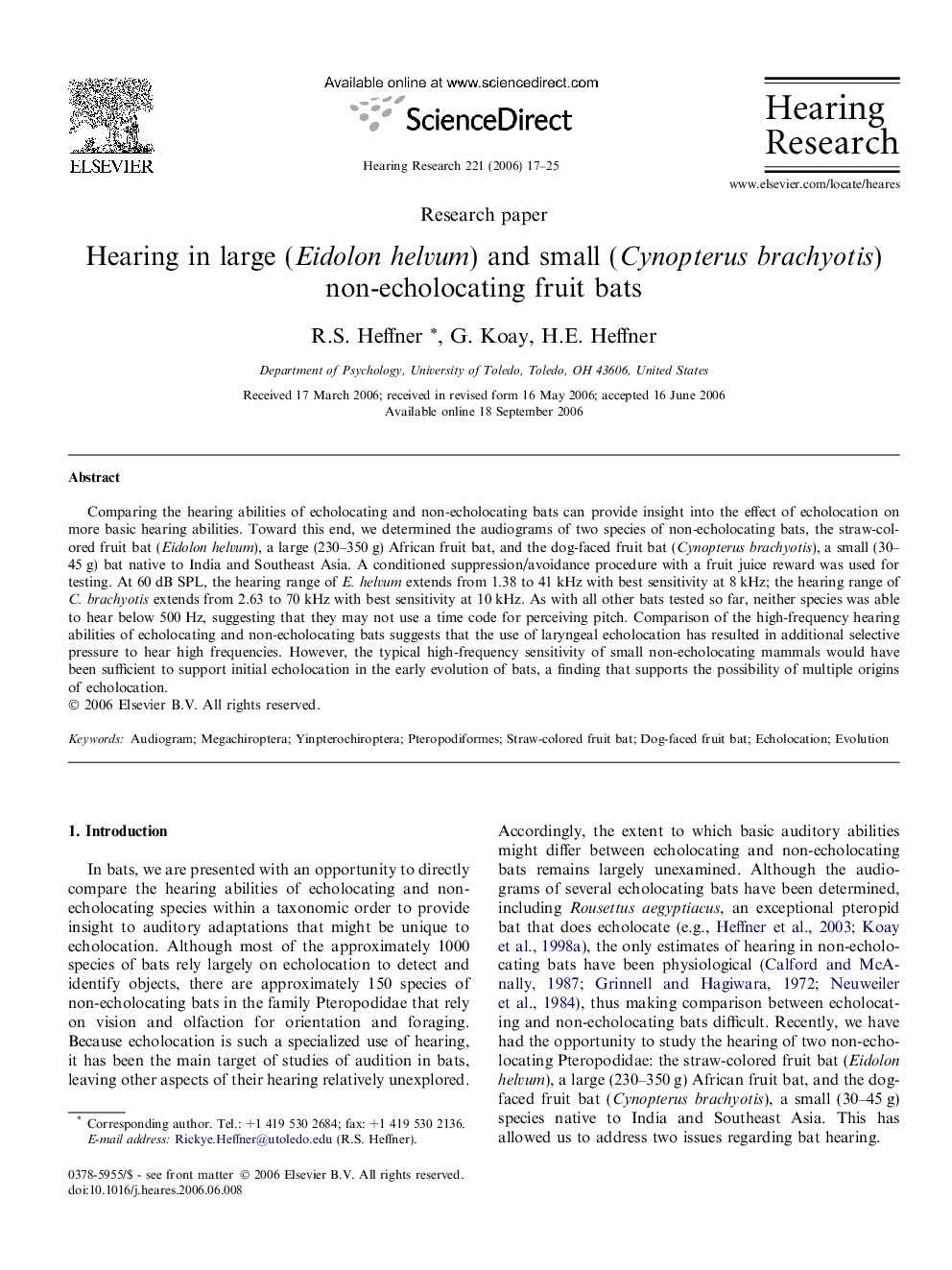| Article ID | Journal | Published Year | Pages | File Type |
|---|---|---|---|---|
| 4356296 | Hearing Research | 2006 | 9 Pages |
Abstract
Comparing the hearing abilities of echolocating and non-echolocating bats can provide insight into the effect of echolocation on more basic hearing abilities. Toward this end, we determined the audiograms of two species of non-echolocating bats, the straw-colored fruit bat (Eidolon helvum), a large (230-350Â g) African fruit bat, and the dog-faced fruit bat (Cynopterus brachyotis), a small (30-45Â g) bat native to India and Southeast Asia. A conditioned suppression/avoidance procedure with a fruit juice reward was used for testing. At 60Â dB SPL, the hearing range of E. helvum extends from 1.38 to 41Â kHz with best sensitivity at 8Â kHz; the hearing range of C. brachyotis extends from 2.63 to 70Â kHz with best sensitivity at 10Â kHz. As with all other bats tested so far, neither species was able to hear below 500Â Hz, suggesting that they may not use a time code for perceiving pitch. Comparison of the high-frequency hearing abilities of echolocating and non-echolocating bats suggests that the use of laryngeal echolocation has resulted in additional selective pressure to hear high frequencies. However, the typical high-frequency sensitivity of small non-echolocating mammals would have been sufficient to support initial echolocation in the early evolution of bats, a finding that supports the possibility of multiple origins of echolocation.
Related Topics
Life Sciences
Neuroscience
Sensory Systems
Authors
R.S. Heffner, G. Koay, H.E. Heffner,
